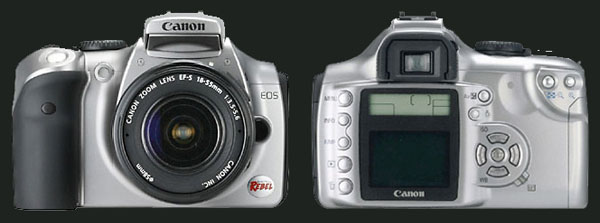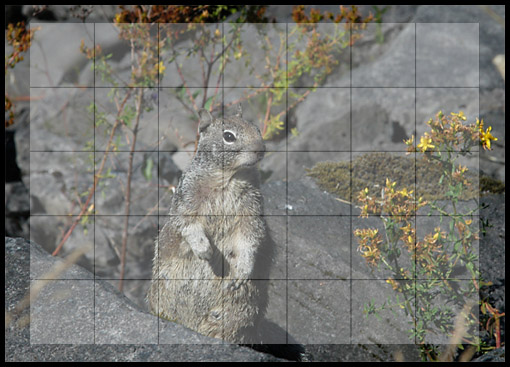
 |
Canon 300D (Preview) |
| August 21, 2003 |
| Preview • Preview (continued) • 300D vs. 10D • 300D Specifications
|
For those looking for an introductory DSLR, the Canon 300D just might be for you. Less than 5 years ago, a similar DSLR could only be purchased for at least 15-times the amount. Canon's 300D is certainly going to make purchasing an interchangeable camera system, a lot easier on your wallet. Will the 300D attract potential 10D users? I'm sure there will be some 300D owners who would have bought a 10D, but overall, we won't know the impact until the 300D has been released for some time. What we do know, is that Canon has lowered the entry requirements for a brand new DSLR, and this is good news for those who couldn't quite come up with $1500 for the 10D. I should mention the D60 is going for around $1000 USD on eBay, and these are mint condition by the descriptions. Of course there are not enough of them to satisfy everyone who wants to spend $1K on a DSLR, but for those who want to take advantage of a higher performance DSLR (although, not that much higher), this could be an option. 300D or the 10D? This is a tough question, because I have recently constructed a 300D vs. 10D comparison. Are there significant differences? Well, there are few things (we'll talk about them). The real test will be in the field, and how the 300D performs, so we have a while before we hear anything. I still think the 10D has an edge, and we'll go over a few of those points in this preview. The Preview As stated above, there is not much lacking overall in the 300D (but to a professional eye, you will notice a few things). Settings such as not being able to manually adjust your white balance from 2800K - 10,000K in 100K increments, is one of them. I think most 10D users don't use that feature anyway. It's still nice to have, but is it worth the $500 difference? You'll have to decide. For me, the more adjustments I can make on a camera, the better. The 300D is more of a cross-breeded Point & Shoot and a SLR--which is convenient for those looking for something more than a typical P&S. Body Construction There have to be some sacrifices when a DSLR is selling for about half of a 10D, and body build is one of them. The 300D's body consists of stainless steel and plastic, while the 10D is made of Magnesium alloy. However, it is not known just how strong this "plastic" is. I can tell you from experience that plastic materials made today are quite durable, and even more flexible. Of course, if the parts are put together in a way to counter-act the characteristics, you could have a problem. 35-Zone Evaluative Metering System Canon has kept this metering system (and many other 10D features) in the 300D. 35-Zone EMS provides the best possible exposure, spread over 35 areas of the imager (7 horizontal x 5 vertical). An example of this is shown below. Other metering modes, such as Partial Metering and Center-Weighted, make up the 3 Metering Modes of the 300D.

A-DEP is Canon's less-sophisticated "automatic" Depth-Of-Field equalizer, where the camera is supposed to come up with a nice relatively clear photo of two different subjects and two different focal lengths. Notice I say, "supposed to". The professional version of A-DEP is DEP, which are found on Canon's professional line of DSLRs and Film SLRs. If you're new to photography, or upgrading from a Point-and-Shoot, I would seriously recommend you forget this automatic feature, and adjust your aperture manually. 7 AF Points

|